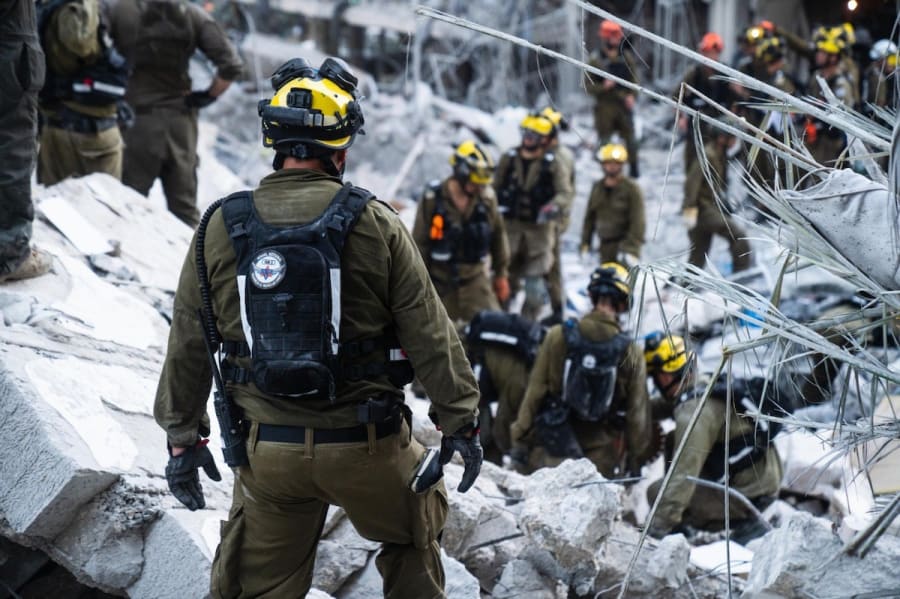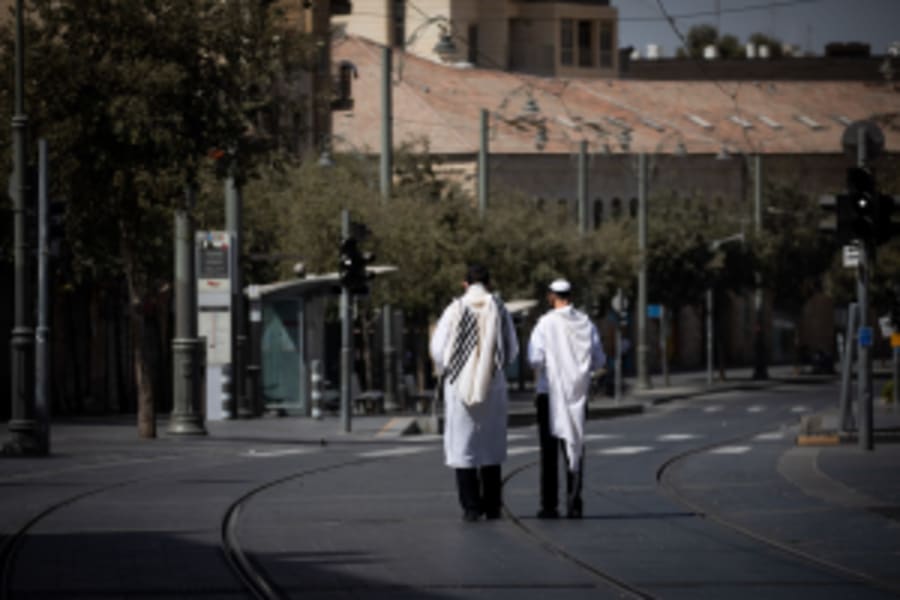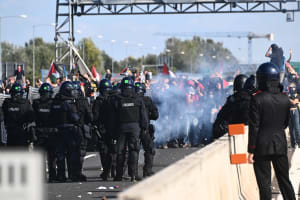Fulfilling a life-saving mission – 26,000 reservists assisted Home Front Command during Operation Rising Lion
‘Part of restoring trust is proving we know how to give support’, reservists help residents affected by Irani attacks

Since the beginning of Operation Rising Lion, approximately 26,000 IDF reservists have been recruited to the Home Front Command, including approximately 50 dedicated rescue and light infantry battalions to help with the work of search and rescue following Iranian ballistic missile strikes.
These forces operate in more than 170 locations across the country and have taken part in search and rescue operations at more than 25 different impact sites. The IDF said the average time of arrival of the Home Front Command's units at the scene of an incident is approximately 15 minutes.
Ynet News spoke with some of the reservists working with Home Front Command during Operation Rising Lion.
Col. (res.) Michael David told Ynet there is a relief that comes when the soldiers discover that no is trapped, waiting for rescue.
”You arrive at an event very tense and alert, and once you understand that there are no trapped and seriously injured, the event can be managed in a more relaxed manner,” he said.
The reservists said that even after rescue and evacuation, they continue to help the residents who come to claim mementos from destroyed homes.
"The father of the 10-year-old girl who was found [after a strike] came back to take a family photo album," Lt.-Col. (res.) Sapir Inge said.
Company commander, Maj. (res.) Eden Herman, who led the evacuation of about 150 residents from an assisted living facility in Tel Aviv, which was hit by a bomb that injured two, said the reservists often have to help convince people to leave.
”Even on the highest floor, the houses were completely upside down, ceilings collapsed, glass shattered. There were hundred-year-old residents there who didn't want to evacuate, that's all they know,” he related. “We approached them kindly, helped them pack what was important to them, and slowly, hand in hand, we helped them get out.”
The IDF Home Front Command also operates electronic and digital services to help prepare and protect the Israeli public. Over 21,000 alerts have been distributed to the public through the command's electronic alert systems. The Home Front Command's information hotline has recorded approximately 300 million visits to the national emergency portal, while approximately 5 million residents actively use the Home Front Command smart phone app for receiving alerts, instructions, and preparation announcements.
During the Israel-Iran conflict, the Home Front Command phone app was the first alert received by many citizens of an impending ballistic missile attack. Some Arab residents of the Palestinian territories also downloaded the app, as the Palestinian Authority has no dedicated system for warning residents of impending missile attacks.
In order to carry out all the tasks related to search and rescue, as well as clearing damaged structures which could present an immediate hazard, the Home Front Command operates a wide range of logistical tools, including approximately 120 heavy vehicles, 640 trucks with towing capabilities, 430 utility trucks, 20 cranes, and about 70 ambulances.
During the conflict, the Home Front Command operated a dedicated call center for handling civilian inquiries, as part of Operation “Safe Return,” to bring Israeli civilians outside the country back home after the cancellation of air travel. The operation, handled by the Alon Command, began operating on Thursday, June 19. Between then and the end of the conflict, the call center handled approximately 11,000 phone calls, and around 6,000 additional calls received via its WhatsApp account.
As part of Operation Safe Return, more than 7,200 citizens returned to Israel by sea on five passenger ships that docked at the port of Ashdod. In addition, over 4,700 foreign nationals were assisted in returning to their home countries following the outbreak of hostilities.
In addition to the efforts of the Home Front Command, active-duty soldiers from the Marom Brigade were deployed to various impact sites this week. The Lotar Unit carried out building searches and complex rescue operations, while the Oketz Unit worked as part of a joint force to locate missing persons and casualties. Utilizing specially trained search-and-rescue dogs and advanced techniques—including drone surveillance in areas at risk of collapse—they played a critical role in the ongoing recovery efforts.
Lt.-Col. Inge said the work of the reservists in the Home Front Command is important to help restore trust in the IDF.
“This is a mission with very high value for us and we are not giving up on it,” she said. “Part of restoring trust between the citizens and the army after October 7 is exactly this, proving to the citizens that we know how to give our backing and support. When the rear is strong – the front is strong. If now we have managed to restore the citizens' trust even a little, we have done our part.”

The All Israel News Staff is a team of journalists in Israel.
You might also like to read this:















